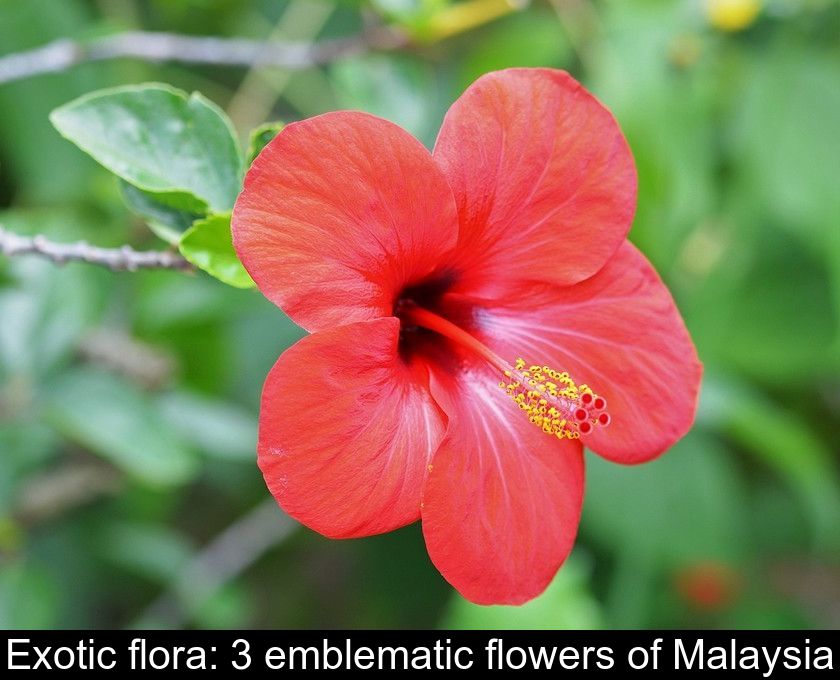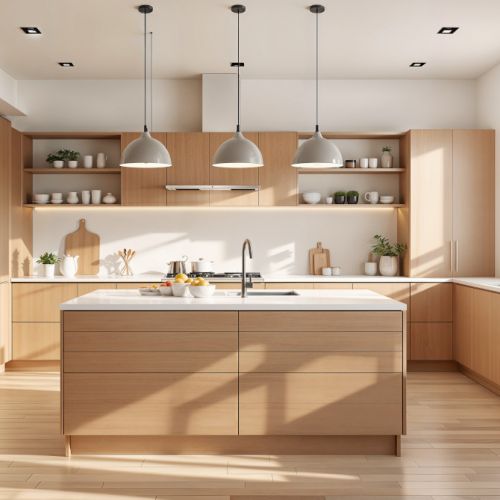Exotic Flora: 3 Emblematic Flowers Of Malaysia
Did you know that Malaysia is one of the 17 countries in the world recognized for its biological megadiversity? The fauna and flora are particularly rich there because one finds there still primary forests and coral reefs. Flowers are particularly important among the symbols of this country. We propose you to discover the 3 emblematic flowers of Malaysia.
1- Hibiscus: the national flower
The first of the 3 iconic flowers of Malaysia is the Hibiscus Rosa sinesis, which is the national flower. It was chosen as a symbol by the government in 1960 because it is very common on Malaysian soil.
It is a red colored hibiscus often depicted on souvenirs you may bring back from this country, as well as on Malaysian banknotes and coins.
In Malay, this flower is called bunga raya, which literally means 'the flower of celebration'. Malaysians consider its 5 petals to represent the 5 national principles or Rukun Negara and its red color symbolizes the courage of Malaysians.
If you are visiting, you can visit a garden dedicated to hibiscus at the Perdana Botanical Garden in Kuala Lumpur.
But be aware that this symbol is not exclusively Malaysian: Unusually, the Chinese Rose hibiscus is also the national flower of the Hawaiian Islands!
2- The rafflesia: a spectacular symbol
Among the 3 iconic flowers of Malaysia, we must also mention the rafflesia which is the largest flower in the world.
One of the species of the genus Rafflesia, the Rafflesia keithii is endemic to Sabah, one of the two East Malaysian states located north of the island of Borneo.
So to hope to see this spectacular flower, you'll need to travel to the island part of the country. You can visit the Rafflesia Information Centre located 1 hour's drive from Kota Kinabalu, among other places, or go to the Gunung Gading National Park in Sarawak.
This flower, which is featured on Malaysian 10 ringgit notes, is the pride of the locals as it can grow to more than a meter in diameter and weigh between 7 and 10 kilos!
Its flowering is very rare. To witness this phenomenon is therefore a privilege that is not without inconvenience, as the flower gives off a smell of decaying flesh...
3- The orchid: a souvenir to bring back
The last of Malaysia's 3 iconic flowers is of course the orchid. Among the 15,000 to 20,000 species of plants recorded in the country, orchids alone account for 3000 species. More than 1,000 different species are found in Peninsular Malaysia alone.
If you want to bring back a sample of Malaysian flora as a souvenir, you won't be able to fly with your potted orchid... But you can buy memorabilia made from real dried orchid flowers.
In some souvenir stores and bookstores, for example, you can find jewelry made from real orchid petals as well as bookmarks adorned with a real dried orchid flower.
Did you know that vanilla, the second most expensive spice in the world, comes from an orchid? In the locality of Temerloh, located northeast of Kuala Lumpur, you can visit Amani Vanilla, a small vanilla producing farm.
After learning about the cultivation of the vanilla tree or vanilla orchid, you can taste this precious spice on site. The farm has its own coffee shop and offers many delicacies... vanilla based of course!



